Cape Town to Cairo 2012
Day 64 to Day 68 - July 30th-August 3rd
We left Hurghada early in the morning in the hopes of avoiding the impossible Cairo traffic. We headed north along the Red Sea towards Suez.

For 15-20 miles there were huge numbers of unoccupied partially constructed condominiums and hotels; I have never seen a larger, more focused real estate bust than this. Two-thirds to three-quarters of every building we saw along the coast fell into what we would call a “non-performing asset.”

You wonder how a country the size of Egypt could sustain this multi-billion dollar bust.
We passed by a huge wind turbine farm with several thousand out-dated turbines with approximately 1/3 of them not working. It was in close proximity to active petroleum fields where natural gas was being flared (wasted).
Offshore we could see LNG (liquefied natural gas) carrier sitting idle – a roughly $200 million asset wasting at anchor.
Ships were built with the anticipation of permanent high natural gas prices, which is still in the $3.00/1000 cubic feet range, less than half of what it used to be when many of these ships were built.
The sum of all these items points to gross financial incompetence – whether it’s individual investors or lack of government oversight, it’s disappointing to see a nation of Egyptians misallocating their scarce resources.
Unlike the edge of the Nile, which generally has at least 100 yards of greenery at its banks, at the Red Sea the desert runs right to the water’s edge. As we get closer to Suez, there is more indication of shipping; large storage tanks for oil, super tankers at anchor and moving slowly, many offshore production rigs and a few jack up drilling rigs. Egypt produces significant energy and is a net exporter of oil.
We did run into Cairo traffic and taxi-cab drivers that like to play dodgems with motorcycles. It’s a game of nerves which is more fun to play with a rental car in a US city than a motorcycle in an unfamiliar place.
Helge’s first step is a photo op at the pyramids, which requires driving through the tourist infrastructure of Giza where the camels and horses live. I didn’t mind the piles of manure but I did mind breathing manure dust.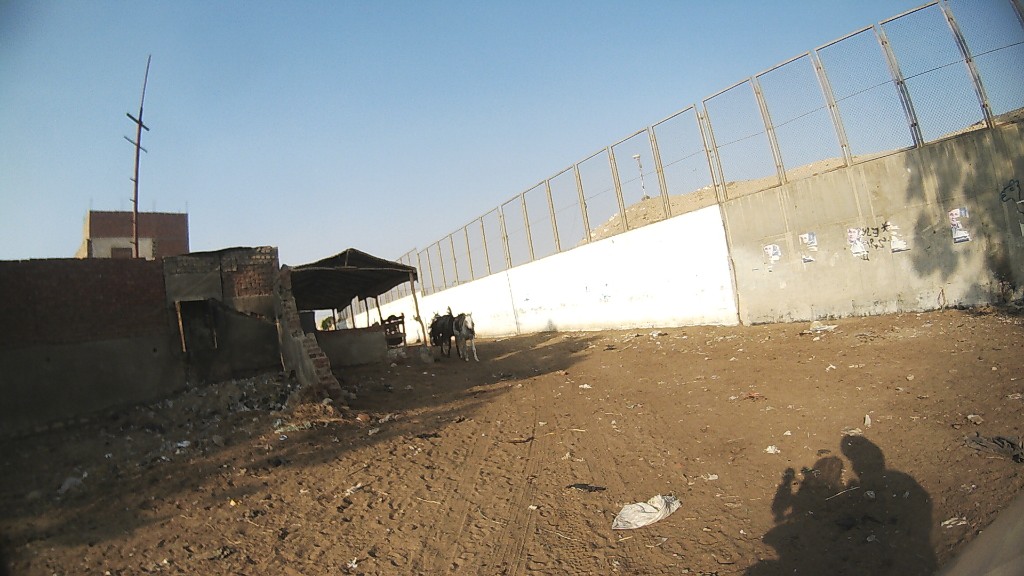
We arrive at the pyramid,

And get plenty of photographs:


Everyone is taking pictures and there is a lot of racing around in the sand, including Helge.



The sand is very difficult to drive in, but Helge has it mastered. While all this is going on, I‘m fooling around with the camels . . .
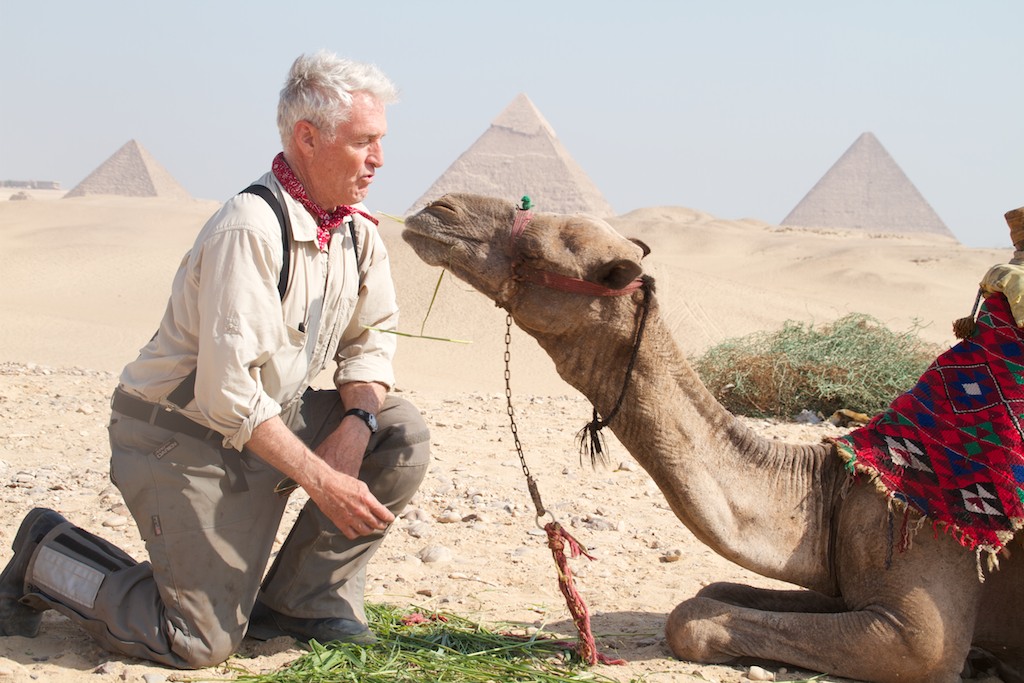
This little fellow seemed very affectionate and seemed to want to snuggle until I reached down and touched some of his grass; at which time he bit me on the forehead.

I hope he’s not carrying the Ebola virus!
We check into a terrific hotel right at Giza in the shadow of the pyramid.
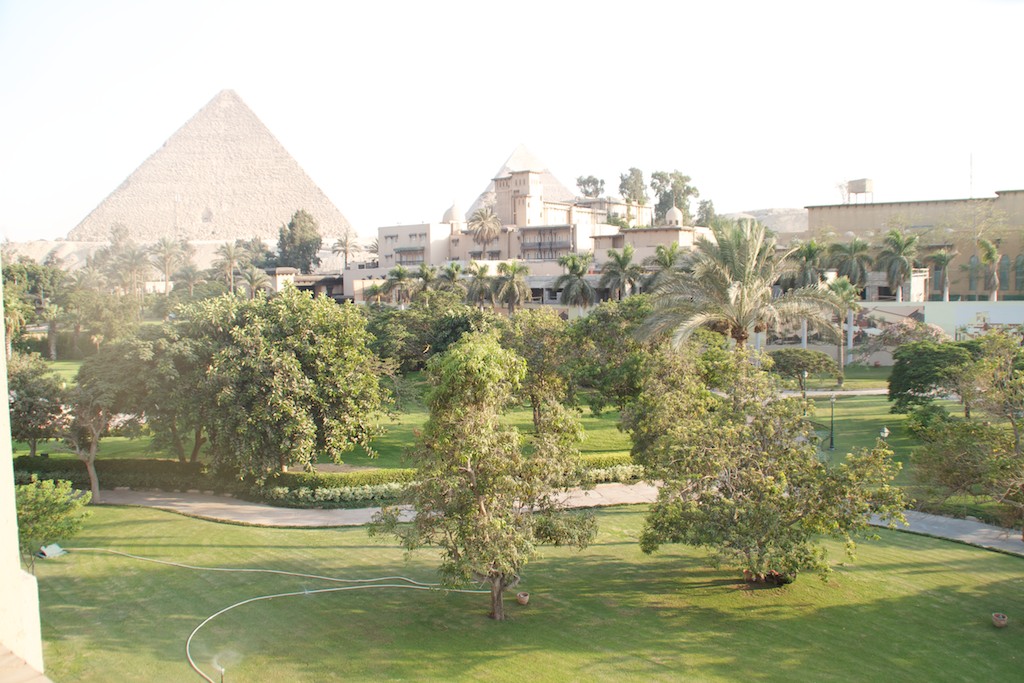
The next day we packed the bikes in a 20’ container after suffering through 6 hours of customs.

At one point while waiting by the port, there was a seemingly drug-influenced man waving a knife and menacing the truck drivers as they emerge from the port. The knife wielder is clearly intimidating people, and the nearby police did very little. We’re told it was not like this before the revolution. At that time, if a body was found on the street, the police would grab everyone in sight and extract confessions from perhaps 5-6 people. Then there only problem would be to determine who of the six confessors actually did it. Torture was Mubarak’s signature tool.
The next day we had an enjoyable dinner with Raymond Baker, a close friend and colleague of Jack Waggett’s, one of my college roommates. Raymond has lived on-and-off in Egypt for decades. He is an expert on democracy in Egypt and the Muslim Brotherhood and provided fascinating insight as to why the Egyptian situation (with respect to having a democracy share government power with the army) is considerably different than the same situation in Turkey – where the army turned out to be a positive catalyst in the development of their current democracy.
On our final day we toured Tahrir Square which is still half-heartedly occupied . . .

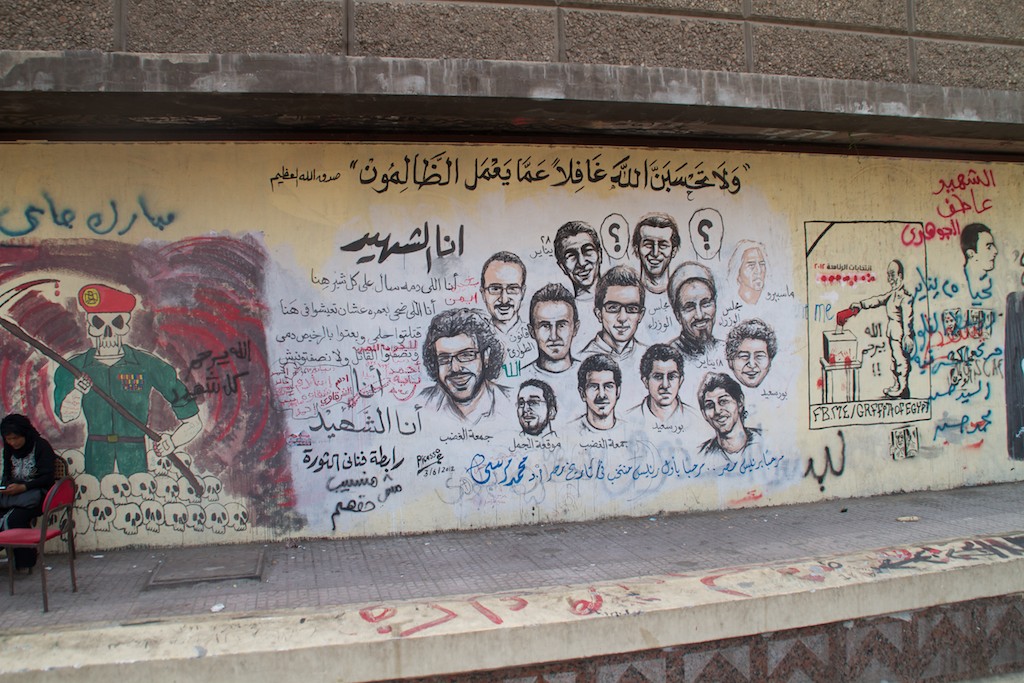
. . . but the graffiti is spectacular - these are some significant members of the revolution.
And here is a picture of Mubarak and some of his top aides.

Here’s a depiction of a funeral ceremony combining an ancient Egyptian motif with a picture of the deceased revolutionary.

They’re not above swearing.

This is the one I like the best – it has the taste of Che Guevara.
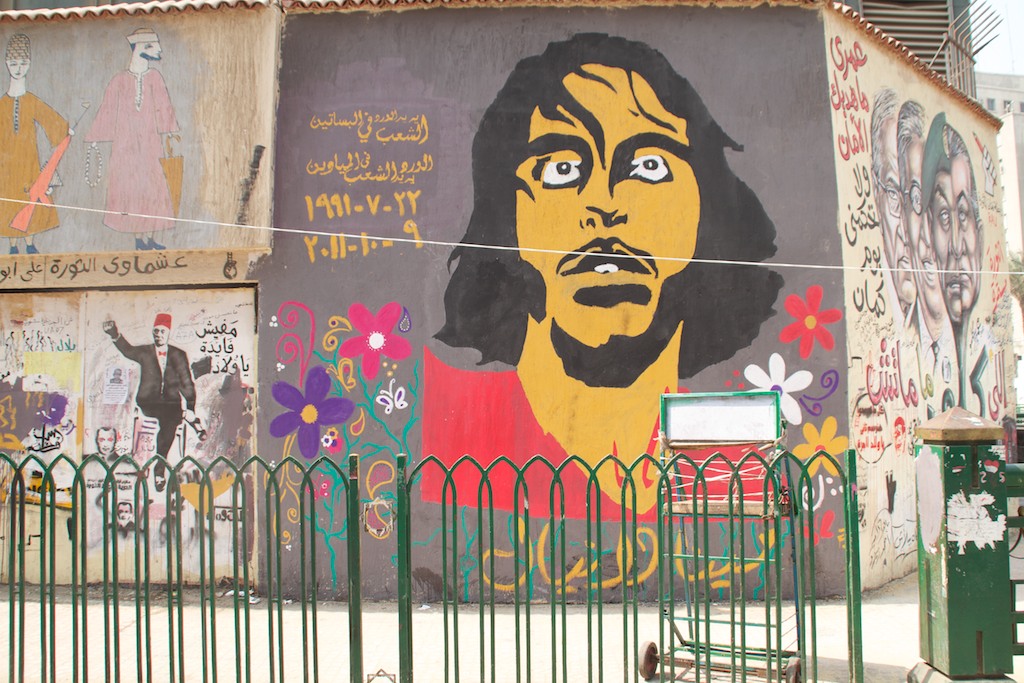
The administrative council’s building adjacent to the square is completely burned out.

And it sits in close proximity to the Egyptian museum – which we toured for 1.5 hours.
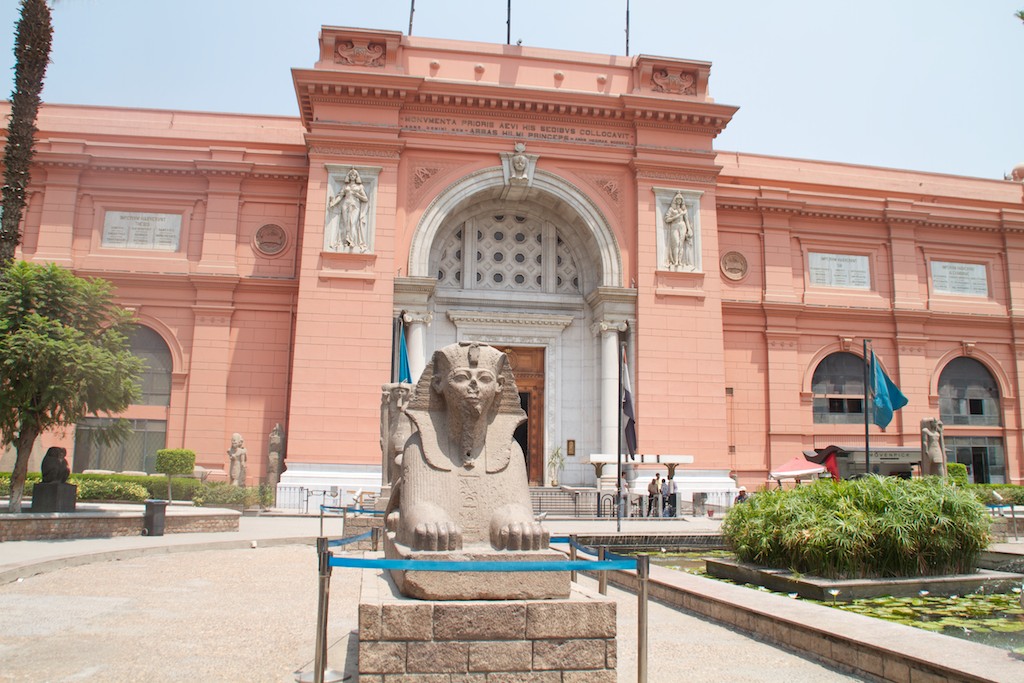
When I first saw this museum in the early ‘50s (being dragged behind my father who was a history buff), it was little more than a disorganized attic. It has emerged into a warehouse with occasional labels on the artifacts, but still needs much more organization and detailed explanations. It is surprising to me that Egypt with its strong tourist industry has not risen to the occasion and created something significant out of this important asset.
Cairo is a beautiful city lined with boulevards.
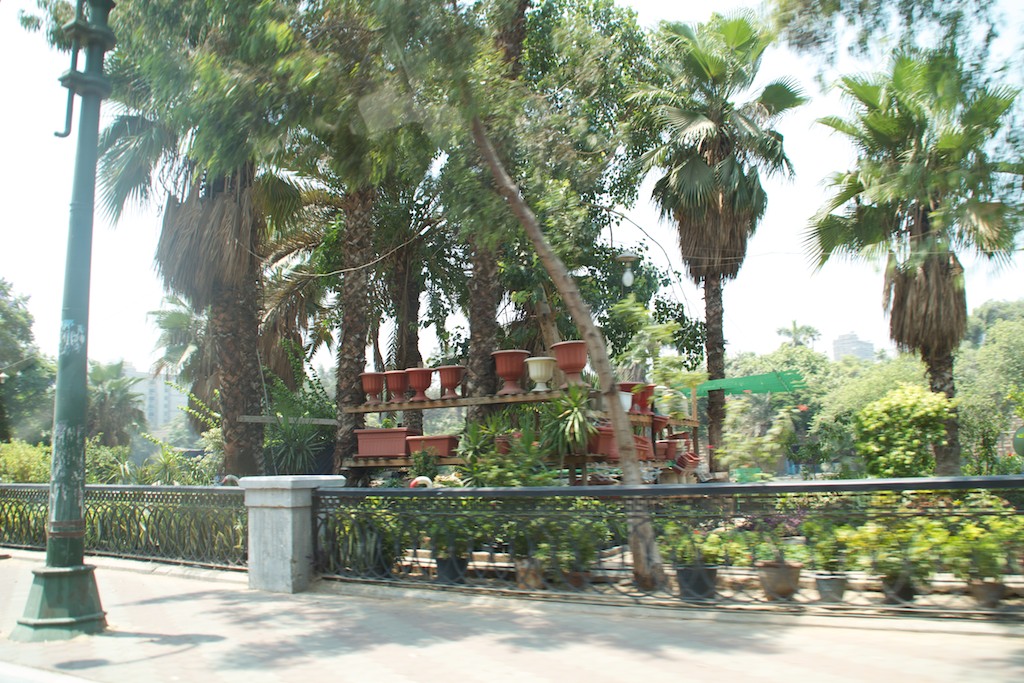
We drive out to the pyramids,

And also see the Sphinx.
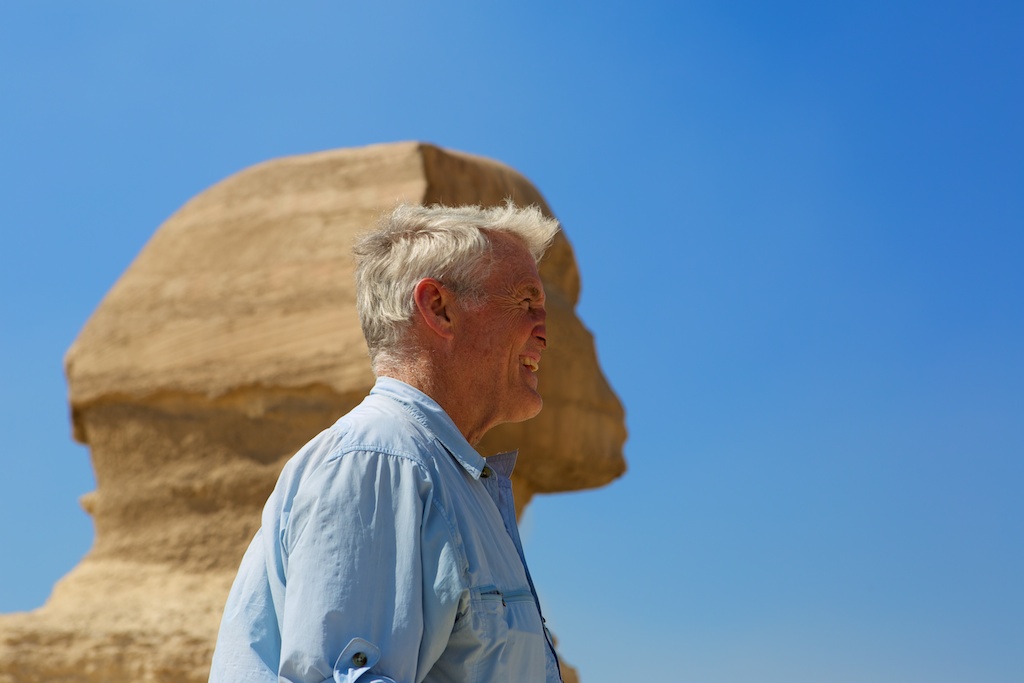
The four of us have been using Aperture software for photo modifications and with this software Helge has both improved my looks and given me the nose of a sphinx.
We take a hike up, and are amused that the tourist police are generally in a sleeping mode – here are a few who didn’t like being photographed snoozing.

Later we go shopping and I buy an outfit for the trip home.
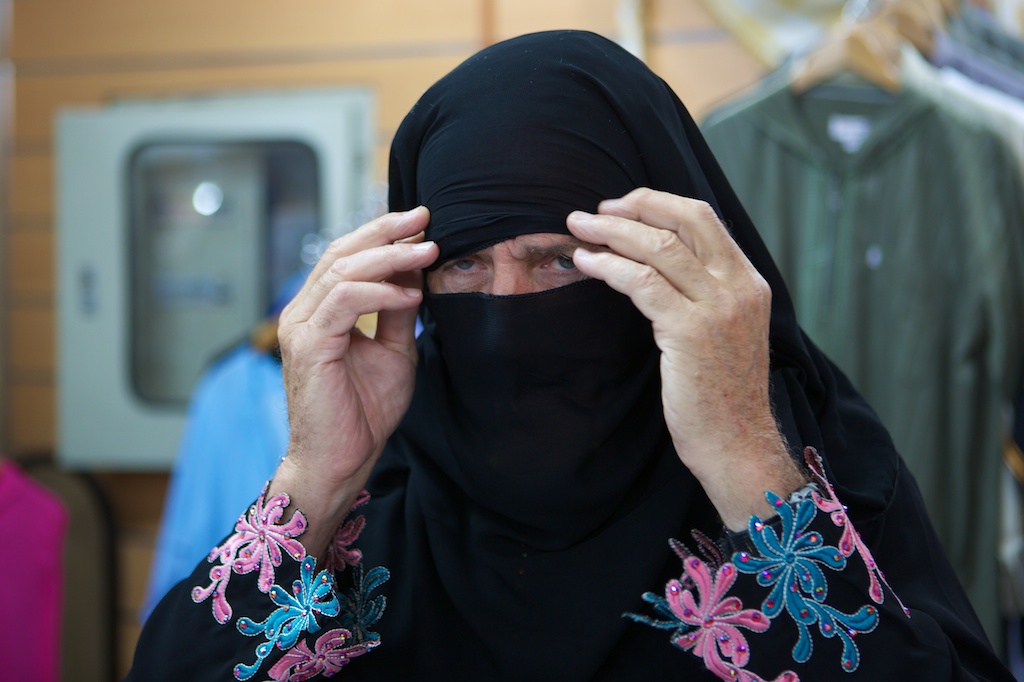
We rise at 4:00 a.m. the next day and catch our planes to various locations. It will be more than 24 hours before we reach home.
Back to Top

- Fascinating!
- Audemars Piguet kopior replica
- cheap nike
- rolex replica horloges
- asfas
- cheap pandora sale -
January 2, 2018, 8:22 am
- Hammer Of Thor Asli Di Medan
Add A CommentMary Ely - April 14, 2013, 8:10 am
Very interesting and adventurous. Great way to share seeing the world and cultures.
Audemars Piguet kopior replica - June 22, 2017, 3:28 am
This is a great watch
Successful person's selectionAudemars Piguet kopior replica
Identity status symbolizes only one watch to prove your advantage
You just need a symbol of this watch
skill - June 27, 2017, 4:01 am
Great Article it its really informative and innovative keep us posted with new updates. its was really valuable. thanks a lot.air max 90 very good.
rolex replica horloges - July 7, 2017, 9:00 am
Both cheap and gorgeous fine imitation watches;goedkope horloges filling your success sty le!
rolex replica horloges Replica watch online.
sdfa - July 13, 2017, 1:47 am
e; pandora matryoshka charm [pandora2611] – 1. Authorized Online Retailer Of pandora2. 100% 925 Sterling pandora rings sale
Silver3. Free Delivery For Orders Over $684. Orders Shipped And .! pandora Babushka with Enamel charm. pandora matryoshka charm For Fall Price 1100 pandora?
Buy cheap Pandora Jewelry,pandora Charms,pandora Rings pandora Bracelets from pandora Factory outlet Store;Selection cheap Pandora charms as special gift for your wife or girlfriend, mom, daughter.Welcome to pandora replica store .All pandora are more than 63% discount.Pandora online store offer pandora rings,beads,necklace,charms pandora sale pandora outlet UK online Store.Cheap pandora Jewelry Sale at pandora outlet online Store. Find A Great Selection of pandora Necklace & Bracelet,Rings.
rumah herbal - March 13, 2018, 6:01 pm
thanks for the article which is very useful, with this post possible for myself and others can add a little insight into what you describe through this blog, even for an author of this blog include people who are good personality throughout his life because it can bring guests from various other parts of the world not just to be a special guest at this very interesting blog.
Obat Titan Gel Asli Di Palembang
Obat Anabolic Rx24 Asli Di Palembang
Obat Kuat Forex Asli Di Palembang
Obat Viagra 100mg Asli Usa Di Palembang
Obat Kuat Cialis 80mg Asli Di Palembang
Obat Potenzol Perangsang Cair Di Palembang
Obat Blue Wizard Perangsang Cair Di Palembang
Jual Obat Hercules Cair Di Medan
Obat Pelangsing Green Coffee Bean Di Medan
Obat Erogan Asli Di Medan
Alamat Hammer Of Thor Di Medan
Testo Ultra Di Medan
Jual Cream Develope Sex Asli Di Medan
Obat Hermuno Intoxic Capsul Herbal Anti Parasit
Distributor Obat Titan Gel Asli Di Medan
Produk Pusat Anabolic Rx24
Jual Obat Capsul Forex
Toko Vimax Asli Di Medan
Pusat Obat Kuat Viagra 100mg Asli Di Medan
Jual Cialis 80mg Obat Kuat Asli Di Medan
Jual Semenax Asli Obat Penyubur Sperma Di Medan
Tattonox Obat Penghilang Tatto Di Medan
Jual Selaput Dara Buatan Asli Jepang
Alat Bantu Vagina Center Flashlight Di Medan
Jual Vagina Getar Suara Silicon Di Medan
Boneka Cantik Full Body Silikon Asli Di Medan
Jual Penis Getar Goyang Alat Bantu Sex Wanita
Jual Penis Mutiara Getar Putar Di Medan
Jual Penis Ikat Pinggang Alat Bantu Sex Wanita
Toko Penis Tempel Jumbo Silicon Di Medan
Distributor Kondom Sambung Jumbo Di Medan
Distributor Kondom Duri Silicon Bergerigi Di Medan
Jual Kondom Getar Silicon
Jual Vakum Alat Pembesar Penis
Jual Alat Pro Extender Asli Alat Terapi Pembesar Penis
Jual Viagra Asli Usa 100mg Obat Kuat Pasutri
Jual Kianpi Obat Penggemuk Badan
Jual Grow Up Asli Di Medan
Cream Titan Gel Asli Di Bekasi
Jual Titan Gel Asli Di Jakarta
Alamat Hammer Of Thor Di Medan
Obat Ericfill Asli Di Medan
Obat Titan Gel Di Surabaya
Obat Anabolic Rx24 Di Surabaya
Obat Forex Asli Di Surabaya
Obat Viagra 100mg Asli Usa Di Surabaya
Obat Cialis Asli Di Surabaya
Obat Potenzol Di Surabaya
Obat Blue Wizard Di Surabaya
Obat Hercules Asli Di Medan
Obat Pelangsing Asli Di Medan
Obat Kuat Erogan Asli Di Medan
Obat Forex Asli Di Medan
Obat Vimax Asli Di Medan
Obat Viagra Asli Usa Di Binjai
Obat Cialis Tadalafil Di Medan
Obat Blue Wizard Asli Di Medan
Obat Potenzol Asli Di Medan
Add A Comment